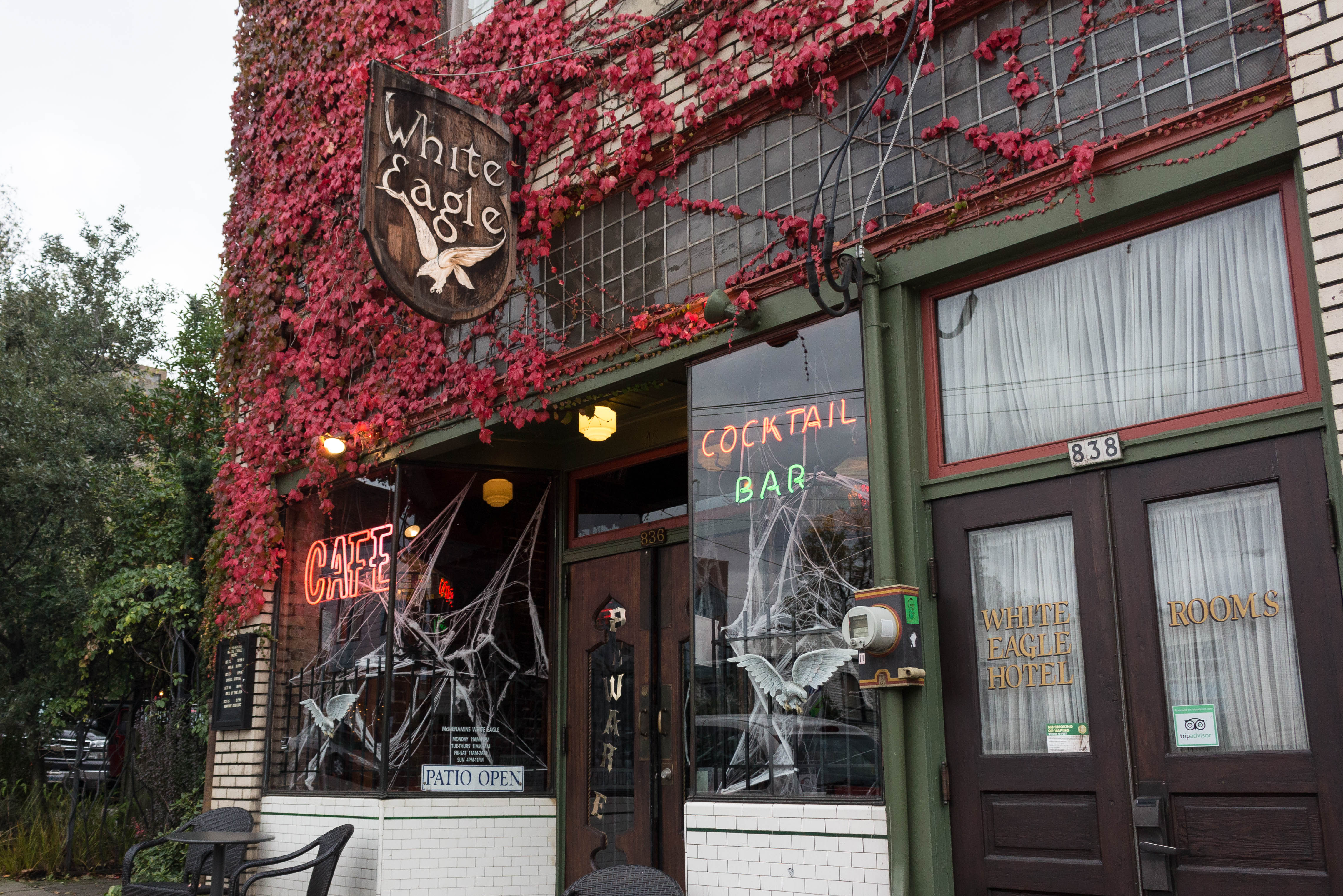The ongoing fracas over the “Made in Oregon” sign came somewhat closer to a conclusion Wednesday morning, as City Commissioner Randy Leonard introduced an ordinance that would wrest control of the sign away from the University of Oregon and give it to the city of Portland.
Saga over iconic sign may be nearing conclusion
The ongoing fracas over the “Made in Oregon” sign came somewhat closer to a conclusion Wednesday morning, as City Commissioner Randy Leonard introduced an ordinance that would wrest control of the sign away from the University of Oregon and give it to the city of Portland.
The UO’s attempt to change the iconic sign, atop the White Stag Building at 70 N.W. Couch St., to read “University of Oregon” has been met with resistance from many from the community, including Leonard and the ordinance’s other sponsors, Mayor Sam Adams and Commissioner Nick Fish. There is a Facebook group with more than 20,000 members in support of keeping the sign as it is.
“I happen to be one who thinks the sign on the west side of the Burnside Bridge is a lot more than just a sign,” Leonard said before a packed Council Chambers. “It is what, for me, defines the city I have lived in my whole life.”
The ordinance would use the city’s eminent domain authority to purchase the sign from Ramsay Signs, the company that has owned the sign since its installation almost 70 years ago.
Leonard’s office created a mock-up of a compromise sign that would read “Portland Oregon” with the words stacked on top of each other. “City of Roses” would be added to the sign’s lower right-hand corner.
Numerous people spoke in support of keeping the sign the same or changing it to something neutral, including Mark Gregory, Portland State associate vice president for finance and administration, and ASPSU President Hannah Fisher.
“Portland State officially supports the city’s current action toward condemnation, which I believe will ultimately result in a negotiated process,” Gregory said. “We feel the sign is iconic, that it has a symbolic value, that it means something different to Portland and we don’t feel it’s appropriate for it to become a marketing tool for an individual institution.”
Fisher struck a conciliatory tone when she gave her testimony.
“I think that the ‘Made in Oregon’ sign should stay the ‘Made in Oregon’ sign. It’s an historic landmark, and Portland serves numerous institutions of higher education. It’s counterproductive for us to overshadow each other.”
Around 20 people gave testimony, with the vast majority in favor of the proposed ordinance. Commissioners Dan Saltzman and Amanda Fritz were opposed to the ordinance and indicated they would vote against it next week. Saltzman in particular was concerned that general fund money could be used to purchase the sign, which is valued at more than $500,000.
“I have many concerns with us condemning private property for public use,” Saltzman said, adding he thought the issue was “frivolous” in light of other, more pressing issues, including dealing with the recession.
The ordinance was amended to ensure that no general fund, taxpayer or ratepayer money would be used to purchase the sign. Leonard said that the ordinance was a last-resort tactic to bring the UO back to the negotiating table, adding that efforts to contact UO President David Frohnmayer since the pair’s December meeting have gone unanswered.
“We are at a point in the process where we have days before it’s too late,” Leonard said, indicating that the university was about to commit $285,000 to change the sign. “Sometimes when you have a roomful of children running around, you have to raise your voice to get their attention.”
Leonard will meet today with Jan Oliver, special assistant to the university’s vice president of advancement, in hopes of reaching a compromise.
“We are more than willing to have that discussion,” Oliver said. “We’re going to be interested with where Randy’s give and take lies.”
Oliver said after the hearing that she thought it was “very possible” that an agreement could be reached before next week, when the ordinance will be voted on. If no deal is agreed upon, litigation surrounding the ordinance is expected to take more than a year, according to city attorney Linda Meng.
Fish said that he had some misgivings about “the casual use of condemnation,” but he said he was confident that “we won’t get to the point” of voting the ordinance through. Fish also noted that the UO requested—and was granted—a favorable eminent domain ruling when it was building its new basketball arena. The ruling displaced several businesses, including a bakery.
Glen Beckley, a Portlander who has spearheaded an effort to keep the sign the same, was pleased with the meeting’s outcome.
“I think it accomplished what Randy wanted,” he said, “which was to get a conversation going about the sign with the University of Oregon. I thought the student body president [Fisher] did a great job of introducing this as a state and citywide problem and not just an intramural problem between two universities.”



